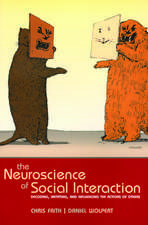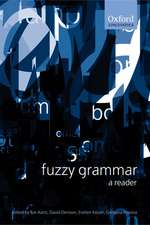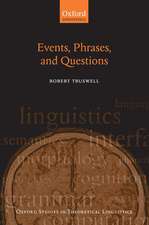How Can the Human Mind Occur in the Physical Universe?: Oxford Series on Cognitive Models and Architectures
Autor John R. Andersonen Limba Engleză Paperback – 28 aug 2009
| Toate formatele și edițiile | Preț | Express |
|---|---|---|
| Paperback (1) | 263.84 lei 31-37 zile | |
| Oxford University Press – 28 aug 2009 | 263.84 lei 31-37 zile | |
| Hardback (1) | 426.31 lei 31-37 zile | |
| Oxford University Press – 6 sep 2007 | 426.31 lei 31-37 zile |
Preț: 263.84 lei
Nou
Puncte Express: 396
Preț estimativ în valută:
50.49€ • 52.52$ • 41.68£
50.49€ • 52.52$ • 41.68£
Carte tipărită la comandă
Livrare economică 03-09 aprilie
Preluare comenzi: 021 569.72.76
Specificații
ISBN-13: 9780195398953
ISBN-10: 0195398955
Pagini: 304
Dimensiuni: 231 x 155 x 18 mm
Greutate: 0.43 kg
Editura: Oxford University Press
Colecția OUP USA
Seria Oxford Series on Cognitive Models and Architectures
Locul publicării:New York, United States
ISBN-10: 0195398955
Pagini: 304
Dimensiuni: 231 x 155 x 18 mm
Greutate: 0.43 kg
Editura: Oxford University Press
Colecția OUP USA
Seria Oxford Series on Cognitive Models and Architectures
Locul publicării:New York, United States
Recenzii
In this ground-breaking book, John Anderson brings together research on computational models of the mind and research on the operation of the brain. The book also provides the best description of the latest version of ACT, which is a significant extension in functionality and theory from its predecessors. The book is a must read for researchers and students in Cognitive Science.
In 2006 John Anderson received the world's major award in cognitive science, the Heineken Prize, for his groundbreaking theory on human cognition. His new book represents a courageous effort to further develop that theory; ambitious in its attempt to develop a coherent, general theory of human cognition of all of its physical, computational, and neuroscientific detail. It seems to me that the advanced tools of the present theory can, with great profit, be applied in meeting an ultimate challenge: explaining the role of language in human cognition.
The mission of cognitive neuroscience is (or at least should be) to connect cognition with neural function, to explain how gray matter gives rise to the psychology of thought. Where many people settle for a mere geography-an inventory of what happens where
An eloquent, personal and closely argued book, that synthesizes decades of Anderson's ground-breaking work, integrates that work with the latest advances from brain imaging, and provides inspiration and direction for the future of cognitive science. This book puts cognitive architecture back at the heart of the subject, and provides a rich and coherent account of the computational machine that is the human brain.
In 2006 John Anderson received the world's major award in cognitive science, the Heineken Prize, for his groundbreaking theory on human cognition. His new book represents a courageous effort to further develop that theory; ambitious in its attempt to develop a coherent, general theory of human cognition of all of its physical, computational, and neuroscientific detail. It seems to me that the advanced tools of the present theory can, with great profit, be applied in meeting an ultimate challenge: explaining the role of language in human cognition.
The mission of cognitive neuroscience is (or at least should be) to connect cognition with neural function, to explain how gray matter gives rise to the psychology of thought. Where many people settle for a mere geography-an inventory of what happens where
An eloquent, personal and closely argued book, that synthesizes decades of Anderson's ground-breaking work, integrates that work with the latest advances from brain imaging, and provides inspiration and direction for the future of cognitive science. This book puts cognitive architecture back at the heart of the subject, and provides a rich and coherent account of the computational machine that is the human brain.
Notă biografică
John Anderson received his B.A. from the University of British Columbia in 1968 and his Ph.D. from Stanford University 1972. He has been at Carnegie Mellon University since 1978 where he is a professor of psychology and computer science. His current research is concerned with developing the ACT-R theory of cognition and involves two related enterprises. One effort is concerned with modeling the acquisition of intellectual competences with major foci being the dynamic problem solving skills such as in air traffic control and mathematical problem solving skills. This research is also tied into efforts to develop computer-based instructional systems. The second effort is concerned with using fMRI brain imaging to track different components of the cognitive architecture in the performance of complex tasks.



























